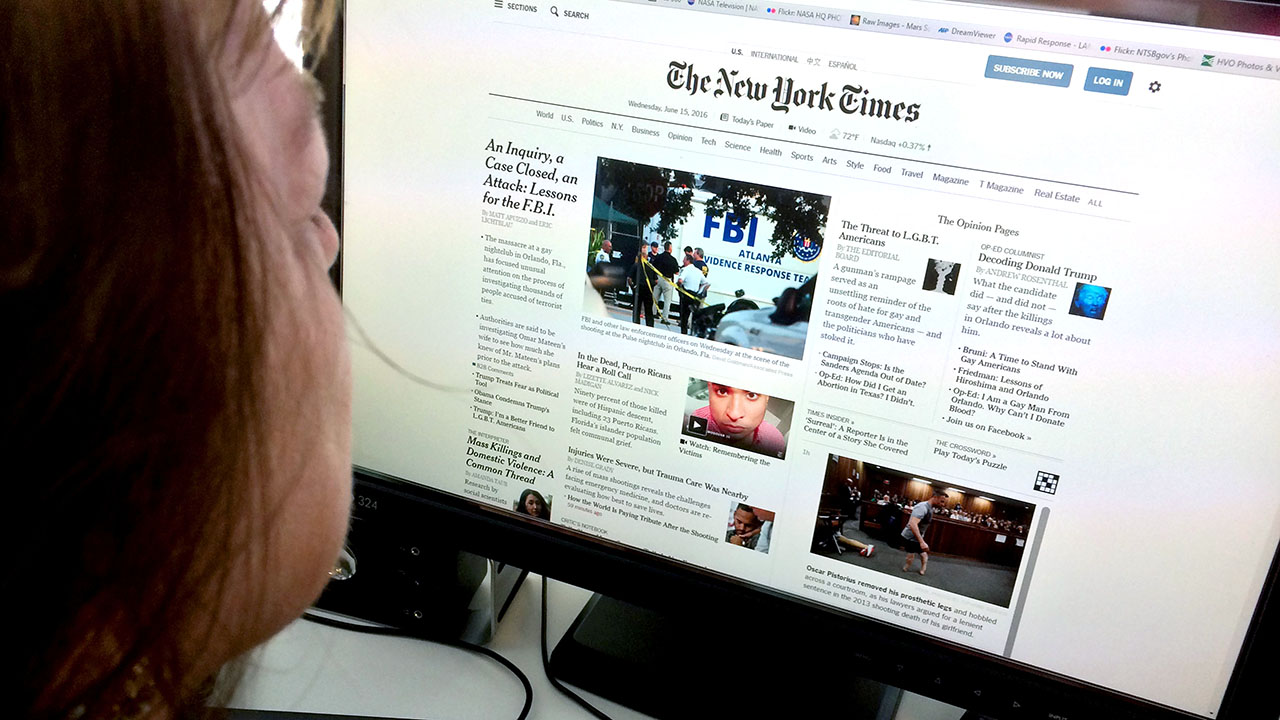DW News Offering Unbiased Viewpoints on Global Issues
DW News Offering Unbiased Viewpoints on Global Issues
Blog Article
The Advancement of Journalism in the Age of Information Online
In the quickly changing landscape of journalism, the digital age has actually ushered in a new age where the immediacy of online news reshapes both its development and usage. As electronic systems multiply, they enhance interactivity and broaden the reach of journalism, yet at the same time challenge standard standards with the swift spread of information and false information alike. The rise of resident reporters and independent voices better complicates the story, adding to a dynamic yet precarious media community. As we navigate these intricacies, one must question the future of journalistic stability and exactly how it can be guarded in the middle of these transformative adjustments.

Rise of Digital Information Platforms
The rise of electronic news systems has basically transformed the landscape of journalism, marking a shift from conventional print media to vibrant, on-line rooms. This evolution was propelled by improvements in innovation and the boosting ease of access of the net, which allowed information to be distributed swiftly and extensively. Unlike their print counterparts, digital systems can instantly update content, supplying real-time information coverage and analysis that allures to the modern-day visitor's demand for immediacy and importance.
Digital platforms have likewise broadened the extent of journalism, enabling a diversification of voices and perspectives. With lower obstacles to access, independent journalists and smaller news companies can get to global audiences, challenging the monopoly as soon as held by developed media conglomerates. This democratization of news has actually enriched the general public discussion, offering varied stories and satisfying particular niche interests that were formerly underserved.
Additionally, the integration of multimedia components such as video, sound, and interactive graphics boosts narration, making information a lot more interesting and accessible (dw news). This multimedia come close to not only brings in a more comprehensive target market however additionally aids in the comprehension of complicated stories. Essentially, electronic systems have redefined journalism, fostering advancement and adaptability in an ever-evolving media atmosphere

Influence of Social Network
Social media systems have actually better reinvented journalism by modifying how news is consumed and shared. In addition, social media has increased target markets, providing journalists accessibility to worldwide viewership beyond geographical constraints.

The interactive nature of social media sites cultivates engagement, permitting audiences to take part in discussions, share viewpoints, and add to information stories. This communication improves the vibrant between reporters and their target markets, promoting a much more participatory kind of journalism. However, this also puts enormous pressure on reporters to produce web content that reverberates with audiences, usually prioritizing sensationalism to record focus.
Moreover, social media systems have actually become important devices for reporters to source tales, determine public point of view, and network with market peers. The dependence on social media likewise demands an essential assessment of sources to make certain the trustworthiness of information shared.
Challenges of Misinformation
Amidst the digital change of journalism, one substantial difficulty is the pervasive spread of misinformation. In a period where info is quickly obtainable and bountiful, differentiating between reliable news and produced material has come to be significantly tough. The large volume of info disseminated across various on-line systems commonly obscures the line in between fact and fiction, posturing a considerable threat to the integrity of journalism.
False information can spread out rapidly with social networks, where algorithms focus on involvement over precision, inadvertently amplifying incorrect narratives (dw news). This not just threatens public depend on in media institutions but likewise cultivates a setting where misleading web content can influence popular opinion and decision-making processes. The obstacle visite site for journalists is twofold: to expose falsehoods effectively and to maintain extensive standards of fact-checking and verification
Additional complicating this issue is the presence of deepfakes and advanced disinformation projects that take advantage of advanced modern technologies to create misleading content tantamount from reputable reporting. As these innovations develop, so have to the approaches and tools utilized by reporters to battle them. Resolving misinformation calls for partnership in between media organizations, technology business, and policymakers to create extensive approaches that secure the authenticity of information in the digital age.
Role of Citizen Journalists
Navigating the landscape of misinformation highlights the transformative impact of person journalists within the digital world. As conventional media outlets come to grips with the large rate and volume of news dissemination online, resident journalists-- normal people equipped with smartphones and access to social media sites-- are playing important source a progressively pivotal duty. These grassroots factors have become important in covering occasions quickly, frequently supplying real-time updates from the ground before mainstream media can react.
Citizen journalists have democratized news reporting, amplifying voices that could or else stay unheard. By leveraging platforms like Twitter, Facebook, and Instagram, they supply varied viewpoints that challenge the narratives regularly pushed by developed media. This democratization, however, also provides obstacles. The lack of official training or content oversight can bring about the spread of unproven information, complicating initiatives to identify truth from fiction.
However, resident journalism is improving the media landscape, compelling conventional electrical outlets to adjust by integrating user-generated material right into their coverage. By promoting neighborhood involvement and encouraging participatory journalism, these digital click to read more storytellers contribute to a much more comprehensive and vibrant information ecosystem. As citizen journalists continue to develop, their function fit public discussion stays an essential component of modern journalism.

Future of Journalistic Honesty
As the electronic age proceeds to develop, the future of journalistic stability faces unprecedented difficulties and possibilities. The spreading of electronic systems has actually democratized information dissemination, allowing a bigger series of voices to add to the information landscape. Nevertheless, this has likewise brought about the spread of misinformation and the erosion of count on media. In this environment, preserving journalistic honesty becomes critical, needing adherence to strenuous honest standards and fact-checking processes.
The surge of man-made knowledge and algorithm-driven material curation even more makes complex the landscape. While AI can improve coverage by assessing vast datasets and determining fads, it additionally presents threats of bias and control. Reporters need to therefore remain vigilant, making sure that innovation functions as a tool for fact instead than distortion.
Moreover, the economic pressures on typical media outlets require innovative company models to maintain high quality journalism. Subscription-based models, nonprofit financing, and partnerships with technology firms are emerging as potential solutions. Yet, they need to be pursued without compromising editorial self-reliance.
Ultimately, the future of journalistic stability relies on the dedication of media and journalists organizations to maintain transparency, accountability, and an unfaltering devotion to truth, amidst a quickly transforming electronic world.
Conclusion
The development of journalism in the digital age provides both opportunities and obstacles. The rise of electronic news systems and social media sites has democratized information dissemination, equipping a diverse range of voices, consisting of resident reporters. Nonetheless, these developments necessitate watchful initiatives to fight misinformation and copyright journalistic integrity. The future of journalism depends upon the capacity to adjust cutting-edge organization designs that sustain top quality reporting while maintaining the trustworthiness and depend on essential for educated public discussion.
The rise of electronic news systems has actually basically transformed the landscape of journalism, noting a change from conventional print media to vibrant, on the internet rooms. With lower obstacles to access, independent reporters and smaller sized news companies can get to global target markets, testing the monopoly as soon as held by developed media empires.Social media platforms have additionally transformed journalism by modifying exactly how information is eaten and shared. As standard media outlets grapple with the large rate and volume of news dissemination online, citizen journalists-- normal individuals equipped with smartphones and accessibility to social media-- are playing an increasingly critical duty. The surge of electronic news platforms and social media has actually democratized information dissemination, empowering a varied range of voices, including person journalists.
Report this page